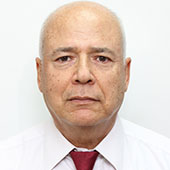Introduction Cleaning Validation and Regulatory Requirements
- Regulations (FDA, EU, PIC/S, APIC, WHO)
- Cleaning process
- Life cycle of cleaning process from development to validation
Understanding the Allowable Carryover (MAC)
- Common MAC limits (PIC/S, FDA and WHO guides)
- New approach of EMA guide (NOAEL and PDE)
- Residues limits on swab and rinse samples and in analytical samples
- Formulas for calculating MAC
Cleaning Method Characteristics
- Types of cleaning residues and their identification
- Analytical methods for cleaning residues: specific versus non-specific (HPLC, HPTLC, TOC, Conductometry, pH, total protein, visual inspection etc…
- Methods for validation and for monitoring
- Limit test versus quantitative test
- Correlation between specific and non-specific methods
- Methods for cleaning residues
Sampling Techniques of Cleaning Residues
- Swab and Wipe Sampling
- Requirements from Swab
- Rinse Sampling
- Solvent Sampling
- Placebo Sampling
- Product Sampling
- Visual examination of cleaned equipment
HPLC, TOC and Conductivity Methods for Residues
- HPLC procedure for residues
- Procedure for Total Organic Carbon
- Procedure for conductivity
- Testing methods for cleaning agents
Roadmap of Dev and Validation of Analytical Procedure of Cleaning Residues
- Cleanability studies
- Development of an analytical method for residues
- Requirements from a method ready for validation
- Validation strategy of analytical methods for residues
- Role of statistical tools in method validation
- Overview of the roadmap from development to formal validation of analytical procedures
- The approach to development and validation of analytical procedures according to the new draft ICH Q14 and Q2(R2) guides
Specificity of Measurement Method
- Interference with excipient residues, degradation product, and cleaning residue
- Interference with swab extractables
- Interferences in analytical samples
- Quantitative aspect of specificity
Accuracy (incl. demonstration with examples and practices)
- Swab Recovery Studies on coupons
- Rinse Recovery Studies on coupons
- Solvent Sampling from hoses
- Accuracy of the Measurement Method
Precision of Measurement Method (incl. demonstration with examples and practices)
- Method Repeatability
- Intermediate Precision
- Combined analysis of Repeatability/Intermediate Precision with One-way ANOVA
Detection and Quantitation Limits of Measurement Methods (incl. demonstration with examples and practices)
- By ICH, EP and USP methods
- of TOC method
- of HPLC method
- Visual detection Limit (VDL)
Linearity of Measurement Method (incl. demonstration with examples and practices)
- ICH requirements (Correlation coefficient, residual SS, residuals plot)
- Considerations (number of data points, of repeats, quality of fit to linearity, etc.)
- Analysis of plot of measured vs. actual concentrations
- Correlation between Cleaning Validation and Monitoring: Relative TOC response factor of Target Residue/Reference Standard in TOC method
Range
- Range on swab and rinse samples
- Range of analytical samples
Robustness
- Robustness factors for sampling recovery
- Robustness factors for measurement method
- by DOE matrix Solvent Sampling from hoses
Validation of Sampling Recovery
- Validation of swab and rinse sampling recovery
- What Spiking Levels?
- How many replicates?
- Acceptance criteria
- Should you correct for recovery?
- Validation of Visible Residue Level (VRL)
- Examples of statistical recovery data analysis
Documentation of Method Validation
- Writing a protocol
- Writing a report



